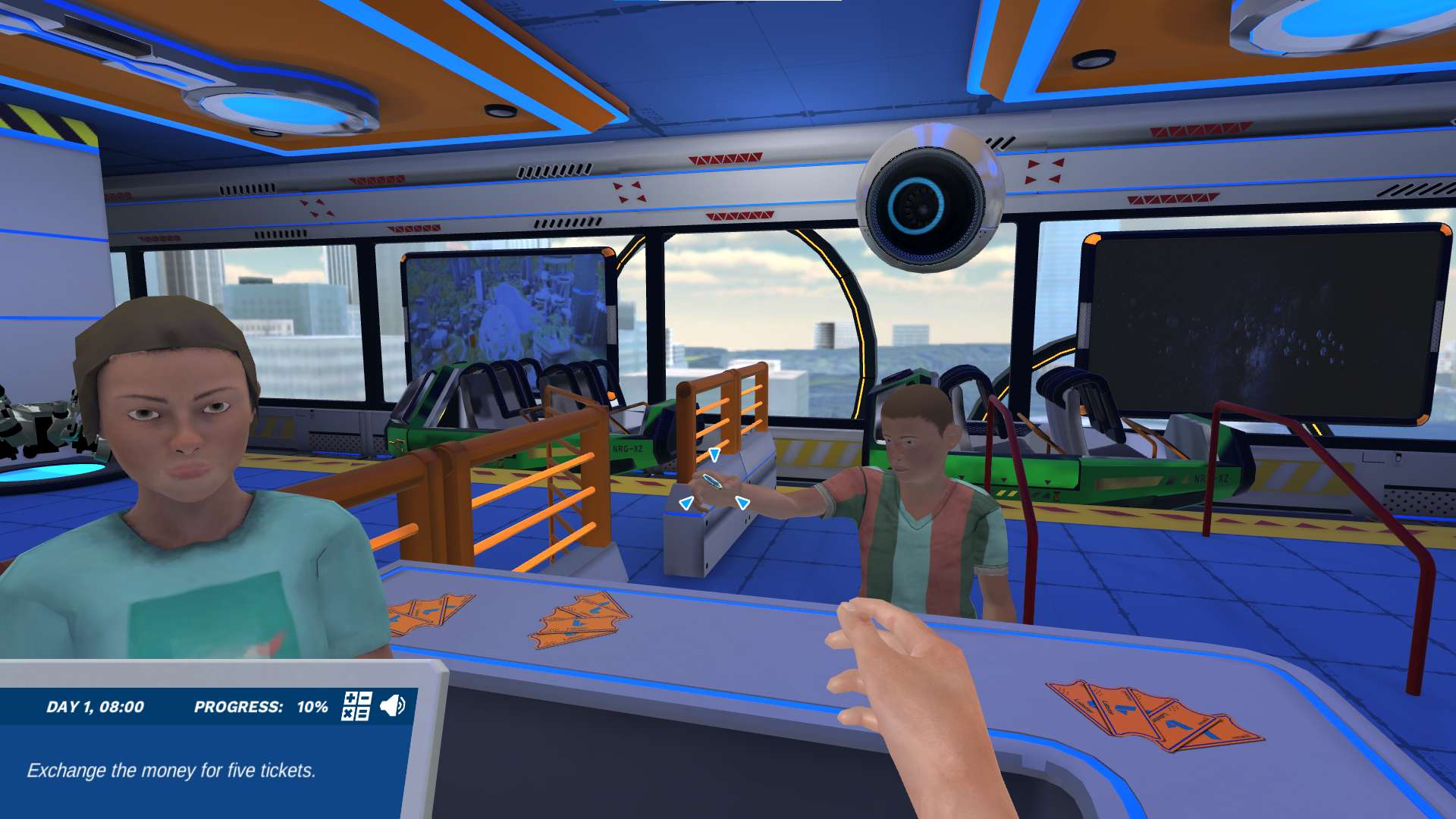Heading 1
Heading 2
Heading 3
Heading 4
Heading 5
Heading 6
Lorem ipsum dolor sit amet, consectetur adipiscing elit, sed do eiusmod tempor incididunt ut labore et dolore magna aliqua. Ut enim ad minim veniam, quis nostrud exercitation ullamco laboris nisi ut aliquip ex ea commodo consequat. Duis aute irure dolor in reprehenderit in voluptate velit esse cillum dolore eu fugiat nulla pariatur.
Block quote
Ordered list
- Item 1
- Item 2
- Item 3
Unordered list
- Item A
- Item B
- Item C
Bold text
Emphasis
Superscript
Subscript
About This Simulation
What does it take to make a roller coaster reach 100 km/h? Join the Labster's roller coaster engineering team and use the conservation of energy to design our most exciting ride yet!
Learning Objectives
- Define potential and kinetic energy
- Define mechanical energy and state its conservation principle
- Use the principle of the conservation of mechanical energy and its mathematical expression to predict the behavior of a body in a frictionless system
- Make changes to an isolated system to alter the total mechanical energy of a moving body, and examine how kinetic and potential energies change as the body moves through the system.
About This Simulation
Lab Techniques
- Potential energy
- Kinetic energy
- Mechanical energy
- Energy conservation
- Energy conversion
Related Standards
- HS-PS3-1
- PS3.B-H3
Learn More About This Simulation
This is the principles (high school) version of the simulation on Conservation of Energy. For a more advanced version please see: “Conservation of Energy: Improve the Labster Roller Coaster”
Stay seated and keep your arms and legs inside the vehicle! In this simulation, you will learn about energy conservation, potential energy, and kinetic energy, and use physics to improve our roller coaster track.
Design a new roller coaster
Familiarize yourself with the equations for potential and kinetic energy, and use our test track to see how they can be applied to roller coasters. Then, use those equations and the principle of energy conservation to find out how to make our roller coaster go as fast as you can.
Experiment with potential, kinetic, and mechanical energy
You will become comfortable with the components of the formulas for potential and kinetic energy and identify the variables that determine each type of energy. Then, they will calculate the energy of our roller coaster car in multiple situations, and figure out how it transforms energy from one type into another. You will have the freedom to experiment with different masses of vehicles at different heights to determine how they influence the initial potential of the system. From there, you will explore the roller coaster's mechanical and kinetic energy, and observe how these impact speed once the car is released.
This high school adaptation takes into account the mathematical proficiency of younger students, relying on simpler calculations and qualitative reasoning.
Hold on fast!
After exploring and manipulating different kinds of energy and energy conversion and conservation, you will think critically and apply their knowledge to a design and engineering problem: How can you make the ride reach 100 km/h?
For Science Programs Providing a Learning Advantage
Boost STEM Pass Rates
Boost Learning with Fun
75% of students show high engagement and improved grades with Labster
Discover Simulations That Match Your Syllabus
Easily bolster your learning objectives with relevant, interactive content
Place Students in the Shoes of Real Scientists
Practice a lab procedure or visualize theory through narrative-driven scenarios


FAQs
Find answers to frequently asked questions.
Heading 1
Heading 2
Heading 3
Heading 4
Heading 5
Heading 6
Lorem ipsum dolor sit amet, consectetur adipiscing elit, sed do eiusmod tempor incididunt ut labore et dolore magna aliqua. Ut enim ad minim veniam, quis nostrud exercitation ullamco laboris nisi ut aliquip ex ea commodo consequat. Duis aute irure dolor in reprehenderit in voluptate velit esse cillum dolore eu fugiat nulla pariatur.
Block quote
Ordered list
- Item 1
- Item 2
- Item 3
Unordered list
- Item A
- Item B
- Item C
Bold text
Emphasis
Superscript
Subscript
A Labster virtual lab is an interactive, multimedia assignment that students access right from their computers. Many Labster virtual labs prepare students for success in college by introducing foundational knowledge using multimedia visualizations that make it easier to understand complex concepts. Other Labster virtual labs prepare learners for careers in STEM labs by giving them realistic practice on lab techniques and procedures.
Labster’s virtual lab simulations are created by scientists and designed to maximize engagement and interactivity. Unlike watching a video or reading a textbook, Labster virtual labs are interactive. To make progress, students must think critically and solve a real-world problem. We believe that learning by doing makes STEM stick.
Yes, Labster is compatible with all major LMS (Learning Management Systems) including Blackboard, Canvas, D2L, Moodle, and many others. Students can access Labster like any other assignment. If your institution does not choose an LMS integration, students will log into Labster’s Course Manager once they have an account created. Your institution will decide which is the best access method.
Labster is available for purchase by instructors, faculty, and administrators at education institutions. Purchasing our starter package, Labster Explorer, can be done using a credit card if you are located in the USA, Canada, or Mexico. If you are outside of North America or are choosing a higher plan, please speak with a Labster sales representative. Compare plans.
Labster supports a wide range of STEM courses at the high school, college, and university level across fields in biology, chemistry, physics, and health sciences. You can identify topics for your courses by searching our Content Catalog.















